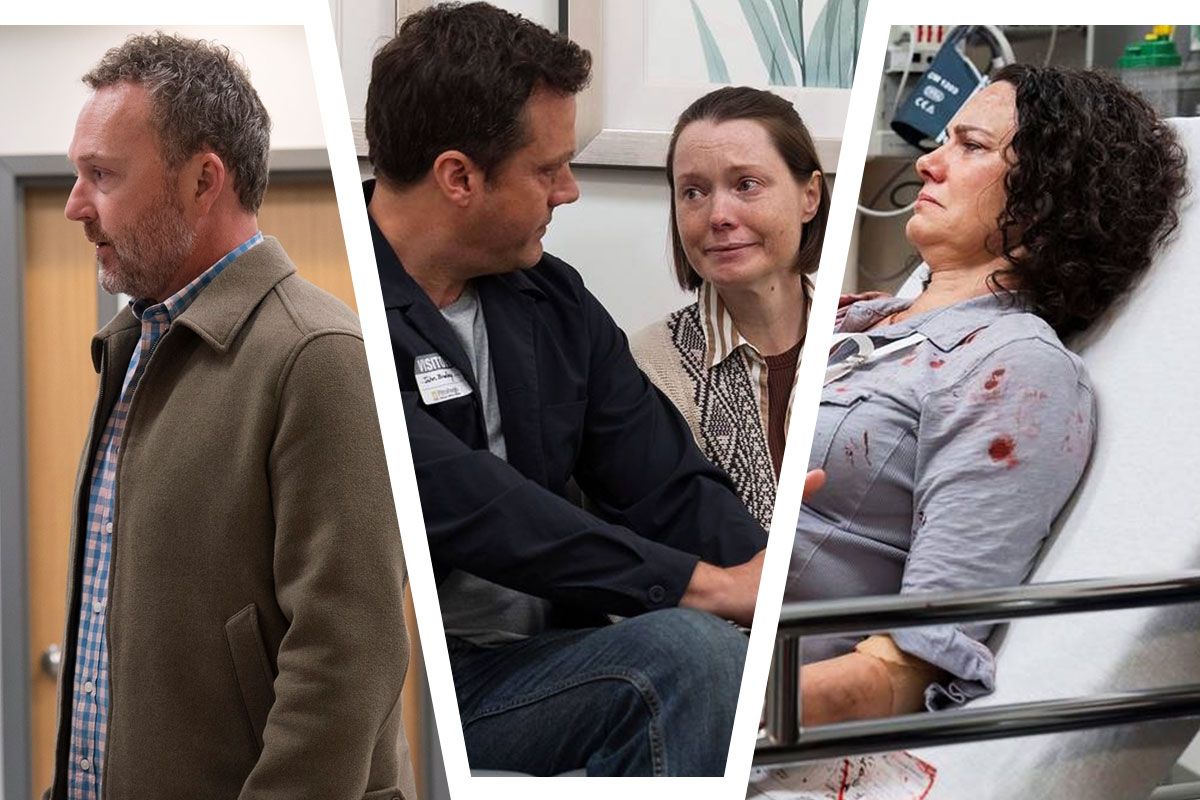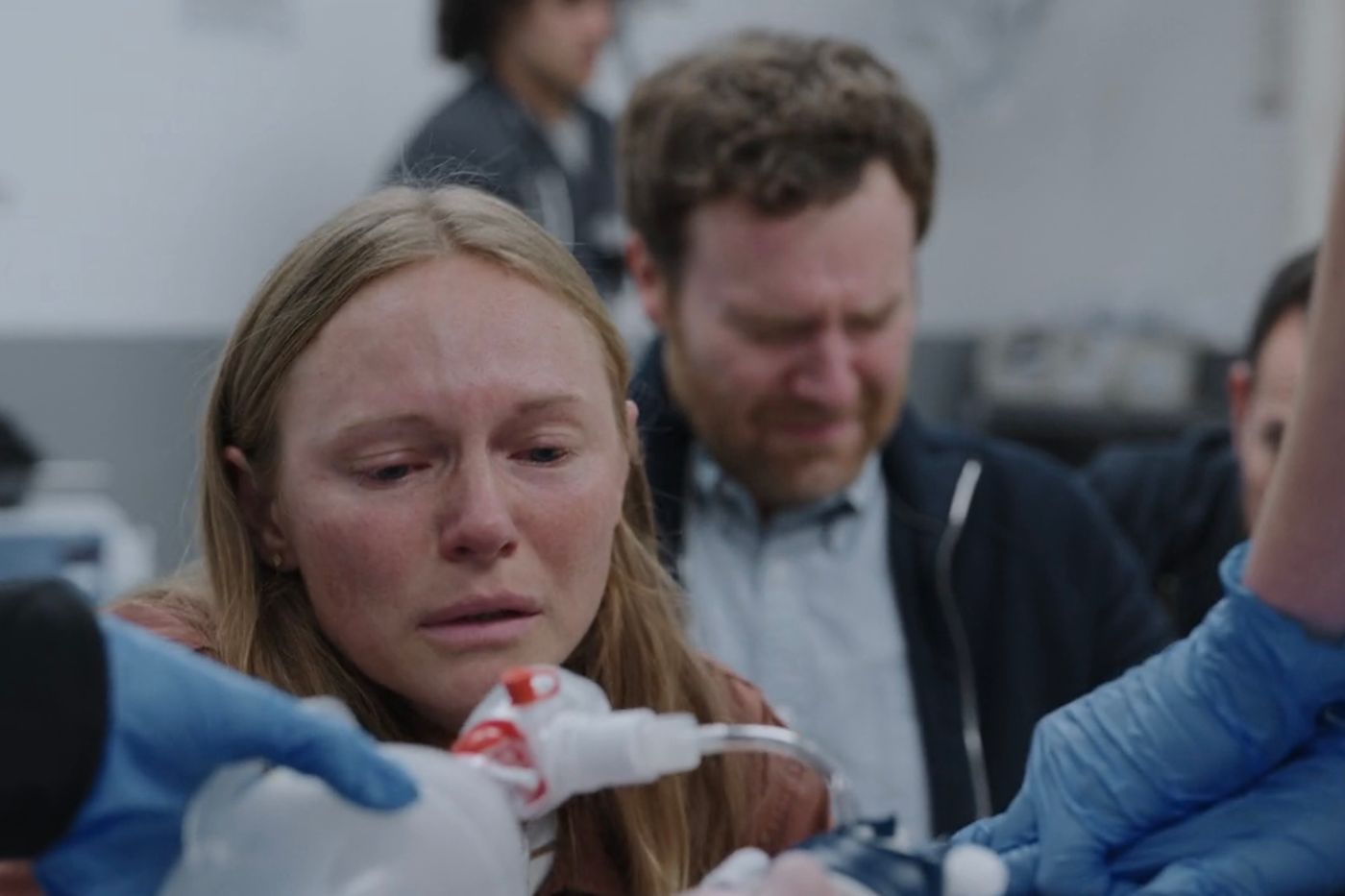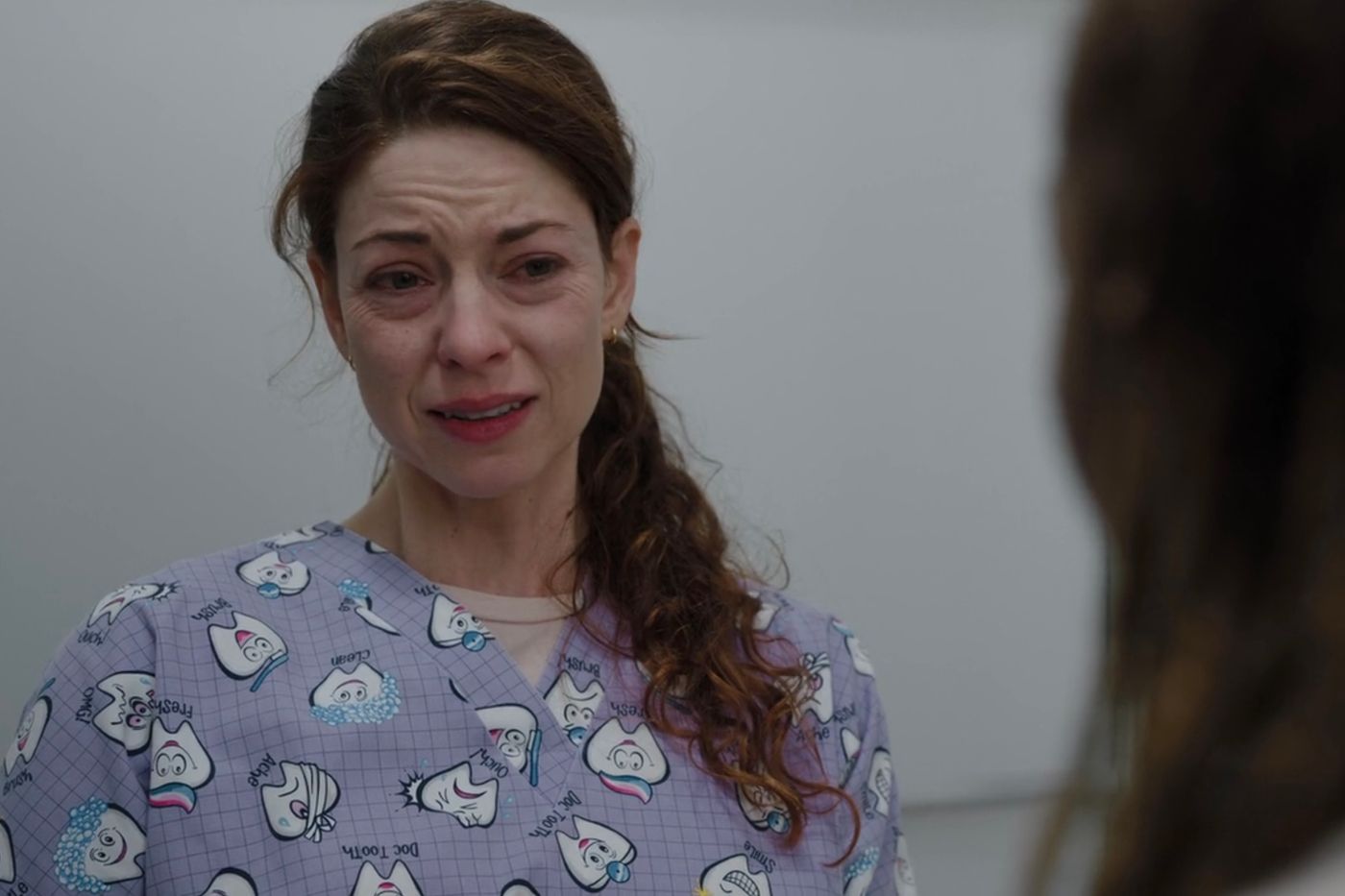How The Pitt’s Guest Actors Performed the Worst Day of Their Lives


Jennifer Christopher has done dozens and dozens of guest-acting stints on TV shows over the years: The Mentalist, How to Get Away With Murder, The OA. But her experience on The Pitt was unlike any she had before.
“I have to be really honest with you, I was afraid of this role,” she says of playing Trish, a shell-shocked victim of a mass shooting who witnessed her husband’s murder and is unsure what happened to her daughter during the chaos. “I knew the weight of it and I wanted to honor that because so many people, unfortunately, have experienced this.” Like any actor, Christopher worried about not being able to muster the depth of feeling required for her scenes, particularly one in which Trish snaps out of her dissociative state and weeps as she recalls what happened to her. But when it came time for cameras to roll, she found she had the opposite problem: She could barely contain the emotion that was bubbling up inside her.
“I was shocked every single time they called action,” she says. “Maybe an actor shouldn’t admit this, but there is a level of magic to what we do. You do your preparation, and then there’s a throwing the net out hoping everything is going to be there when action is called. I never had to. It all kept coming up for me, every single time.”
Christopher is one of several guest actors on The Pitt who must play a person experiencing the worst day of their life. They are parents of children who overdosed on fentanyl or accidentally drowned, a wife finding out her husband has been murdered, a father grappling with how to guide the medical care of his gravely ill son, or, as in Christopher’s case, a patient suffering while grieving the loss of a loved one. Every one of these actors was expected to do what so many good TV guest actors do: slide into a character’s skin for an episode or two and authentically reveal who they become in their moments of deepest anguish. It’s not easy work. “People aren’t necessarily that welcoming on sets,” says Devon Gummersall, who plays Larry, the father of a teenager with severe measles, in the final two episodes. “I’m not saying they’re not nice. It’s just sometimes, it can be a little bit cold, and you go, ‘Okay, I’m just here to earn my paycheck.’”
“This,” he says of The Pitt, “is the opposite of that.”
As Christopher, Gummersall, and others explain, the atmosphere on the set of The Pitt and the show’s unique approach to storytelling create conditions that allow actors, including the ones who are technically temporary, to do their best work, even when that work requires them to go to the most distressing places.
‘Nothing is fake’
The complete interior of the Pittsburgh Trauma Medical Center lives on a set inside a Warner Bros. soundstage. Those who’ve spent time sitting in one of its exam or operating rooms say it feels no different from being in an actual hospital. “In every room, you open a drawer and there’s real sutures and bandages and stuff,” says Gummersall. “Nothing is fake.” (If you didn’t recognize the longtime actor and TV director who played Brian Krakow on My So-Called Life, don’t feel bad. At first, star and EP Noah Wyle didn’t, either. “He goes, ‘Dude, I didn’t realize it. I’m sorry,’” Gummersall recalls with a smile. “‘I’m such a fan of that show.’”)
The lights are built into the set, which means there’s no need to take lengthy pauses to adjust them. Instead of staying in set positions, the cameras move with the action, so the actors don’t have to deal with rigid blocking. “You’re never hitting a mark,” explains Samantha Sloyan, who plays Lily Bradley, the mother of a teenage boy who accidentally overdoses on fentanyl, in seven of the 15 episodes. “They are never moving lights. Everything is the space.”
Brandon Keener, who portrays John Bradley, husband of Lily and father to their son Nick, notes that members of the crew dress in medical scrubs so that “even in your peripheral vision, everybody’s in character.”
That attention to detail not only helps the actors maintain a sense of focus, but it also provides inspiration. During the scenes where Trish is in such acute shock that she cannot speak, Christopher lasered in on the things in her line of sight to inform Trish’s mental state. “What I’m visually looking at as I’m sitting there in this wheelchair with everything going by, it just became very simple: seeing a drop of blood on the floor and really feeling the life in it.”
‘That unlocked something for me’

Due to constraints presented by actor and location availability, most films and television series are shot out of sequence. The Pitt, which unfolds over the 15 hours that comprise the day shift at PTMC, doesn’t. Every scene is shot in chronological order, the way life would happen for the characters and the way the audience witnesses it. The actors don’t have to engage in the usual mental gymnastics required to make sure they’re hitting the right notes based on where they are in the timeline of events because they are literally reacting to everything in real time.
“As an actor, you can build your performance off of what happened in the episode instead of imagining where you might be,” says Sloyan, a regular in horror auteur Mike Flanagan’s projects. “I’ve shot things sequentially, obviously, in that one episode leads to the next, but never in a scene-to-scene, moment-to-moment style. That builds, for everybody involved, a deep understanding of the story being told.”
Marci Miller appears in episode eight as Gina, the mother of Amber, a young girl who dies after drowning in her grandmother’s backyard swimming pool, and found that shooting chronologically enabled her to steer her character’s journey down unexpected paths. Miller remembers a note she got from director Amanda Marsalis as Gina whispers to her unconscious daughter that she’s going to get better: “I want you to say it, but this time you don’t really believe it.”
“It was this key that unlocked something for me, that really built my whole arc from then on,” Miller says. “Which is another gift in shooting chronologically: I didn’t have to think, I can’t do that because I did this yesterday. I could carry that note with me throughout the rest of the journey.”
‘You were immersed in that situation’
When most of the actors signed up to be on The Pitt, they didn’t realize how much time they would spend on set, even on days when they technically didn’t have any scenes. Cameras are constantly swooping around and through the rooms that make up the ER, which means that, for continuity reasons, it’s important for characters to remain in specific areas that could serve as background.
“Usually, you’re just there and then you go back to your trailer, or you’re just there on the days that you shoot,” Keener says. “But we were there when we weren’t shooting, as atmosphere.”
“There would be whole days where we didn’t even say things,” adds Sloyan. “It really helped you feel like you were immersed in that situation.”
The cast and crew of The Pitt go to extreme lengths to make it seem like whatever is going on in the background is actually happening, too. Gummersall says that during his scenes with his family and their measles-infected son, which took place in trauma room two, a separate, elaborate procedure was acted out in the adjacent trauma room one.
“In trauma one, they’re doing an entire surgery that’s choreographed and accurate and they’re doing it just to be in the background in case we see a slight piece of them,” Gummersall says. “Then the next day it switches; suddenly we’re in the background, and they’re doing their scene of the surgery with the dialogue. It’s just amazing.”
Even though she is barely in it, Christopher has an acting credit for her work in the season finale because she was required to stay in the exam room where Trish got parked in the previous episode. “The camera goes by the room a couple of times and they were afraid they might see our feet,” she says. “So they had us there for that.”
If Christopher had been needed only during her speaking scenes, she guesses she would have worked a day or two. But by doing things The Pitt way? “I believe I worked at least 15 to 20 days,” she says.
‘He’s helping me deepen it and enrich the moment’

When each guest actor auditioned for their role on The Pitt, they received a note written by Wyle. In it, he says that everyone, from the top to the bottom of the call sheet, should be prepared to be there for everybody else, whether the camera is on them or not.
“Noah said, ‘I want it to feel like a combination of television repertory theater and camp,’” Sloyan recalls. “I feel like they accomplished that.”
In that kind of environment, everyone wants to see the guest actors succeed, something Bethany Walls could feel while shooting the moment when her character, Whitney, first learns her husband was killed in the mass shooting. Walls had to summon shock and tears during multiple takes while hospital social worker Kiara (Krystel V. McNeil) and ward clerk Lupe (Tracy Vilar) deliver the terrible news.
“Krystel and Tracy gave me so much,” she says. “Watching how devastating it was for them to give that news was all you could ask for as an actor. There’s a moment where they both say, ‘I’m so sorry,’ and there’s something in both of their eyes that’s just so heartbreaking, kind, and compassionate. It got me on the day and it got me watching it back, too, just the heart behind that.”
The directors offered suggestions that were helpful to the actors without stepping on their toes or robbing them of their autonomy. After the first take of shooting one of Gummersall’s most pivotal scenes, when Wyle’s Dr. Robby takes Larry into the temporary morgue for the deceased shooting victims, director John Wells asked Gummersall if he’d ever been in a room with dead bodies before. He hadn’t.
“Well, I have,” Wells told him. He described how strange it smells and how it “just feels wrong being in there.”
“He was just saying, Hey, here’s a little color for you that could be interesting to add,” Gummersall says. “He’s not really asking me to change anything. He’s helping me deepen it and enrich the moment. That was actually one of the most memorable pieces of direction I’ve gotten in my career.”
‘I was allowed to grieve in this process’
Everybody has either been in a hospital or feared that they or a loved one will end up in one. Most actors can draw from their own sense memory and past experience to put themselves in their characters’ shoes. Because The Pitt guest actors felt so supported and found the scripts so rich, they were able to tap into those reservoirs much more easily. Keener says he was able to display cracks in John’s demeanor simply by thinking of his teenage children and how much he worries that, like his fictional son, they might accidentally be exposed to fentanyl.
“It’s not that hard to summon that emotion because this is stuff you have to worry about all the time now,” he says.
Miller, who has two young children, says her story line affected her profoundly because it was so easy to imagine herself as a grief-stricken mother who suddenly lost her daughter.
“Even in the makeup chair, I was embarrassed because I felt like, I cannot stop crying,” she says. “I just felt it so heavily.” But when she began shooting the sequence, she no longer felt alone with that heaviness. “Everybody felt the weight of it,” she says. “The day of, there was something in the electrons or something. We could feel what we were doing.”
During Christopher’s time on The Pitt, she commemorated the first anniversary of the death of her father, who died after a cancer battle that put him in the hospital for long stretches. Reaching that milestone put her in a more vulnerable state, something she was able to use in her performance. “I was allowed to grieve in this process,” she says.
“Sometimes as a guest actor, you get dropped in, people don’t remember your name, you don’t have time to connect with people. This felt more communal. You felt like you were a part of the regular cast.”

Latest News
For Sale! 2016 Sea Ray 350 Sundancer – $180,000
Reel Deal Yacht is pleased to feature a meticulously maintained 2016 Sea...
Michigan to suspend Sherrone Moore for 2 games to address NCAA allegations, AP sources say
Michigan is expected to suspend coach Sherrone Moore for two games next...
Atkinson, Bickerstaff and Udoka are the finalists for NBA coach of the year
Kenny Atkinson got Cleveland off to a 15-0 start to the season...
The Met Gala, fashion’s biggest night of the year, is here. Here’s how to watch and follow along
Pharrell Williams has high hopes for the Met Gala, the first to...
Ex-Dolphins DL Jason Pierre-Paul claims $400K watch was stolen during Hollywood F-1 event
Former NFL defensive end Jason Pierre-Paul is speaking out after claiming that...













